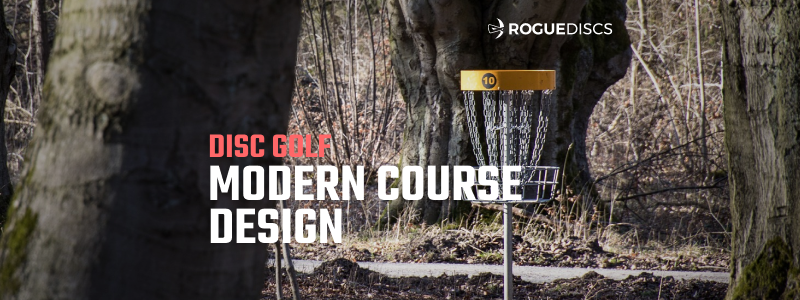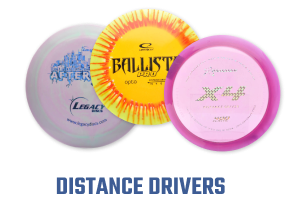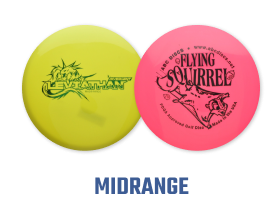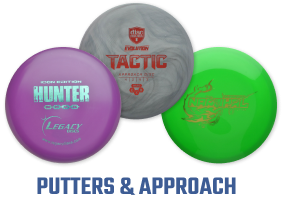
Have you ever looked at a plot of land and thought how beautiful it would be for disc golf? It’s one of my favorite pastimes. Courses are being installed the world over as there are currently over 13,000 courses across the globe. But not all courses are created equal. I wondered about general course design and course design for the modern professional game. To gain insight, I had the fortune to interview Randy Schukar of Stevens Point, WI. Schukar has designed twelve courses and has had input on countless others. He is a wealth of information and approaches course design as an art form. Course designers have had to be dynamic through the years as technology has driven disc golf into new territories of skills and abilities. Let’s take a look back at the humble beginnings of disc golf.
Courses Through The Years
Historically courses have been on the short side compared to the modern game. As technology drives our sport into the future, course designers have had to adapt and design courses to continually challenge players. The gap between entry-level players and those of the top touring professionals has continued to expand. Therefore courses for the Disc Golf Professional Tour (DGPT) have grown in length and difficulty.
Courses now consistently top 10,000 feet in length. Contrast that with the world’s first permanent disc golf course in Pasadena, CA, installed in 1975. The course is Oak Grove DGC at Hahamongna Park and is 5,115 feet over 21 holes. That’s half the size of today’s courses and has three more holes! Courses have adapted to technology, and design is continuously finding ways to challenge players. Schukar had this to say about the direction of course design; “We all know how disc technology has allowed players to throw further than ever. As competition, media coverage, and spectator appeal have grown, there is more demand for really long and open tracks. But while that elite segment represents 5% or less (probably.05%) of our player base, only a small percentage of courses need to cater to that style of play. I believe a good course should test and build on a number of skills, distance being only one of those skills.”
Many modern courses are doing so. Look at Eagle’s Crossing for one of the best examples. One of the best ways modern courses can challenge players of all skill levels is via multiple tee pads and basket locations. This allows players to experience vastly different courses, all within the confines of the same acreage. This is also an excellent way for experienced players to challenge themselves with a multitude of shot-shaping.
Having multiple tee pads and baskets allows a course to be of interest to the entire gamut of players. First-timers up to experienced professionals can enjoy a round of courses that offer options for play. This also allows the pace of play to progress as less experienced players can play easier holes. Yes, installing more tee pads and baskets is more expensive. However, there are many ways to fundraise and employ volunteers(typically local disc golf clubs) to pitch in with labor.
The Process
If course design is something you are interested in, then check out the PDGA website for guidance and a launch pad to get you started. Every course begins as an idea, and we need more course designers! As the sport progresses into the future, we need creative minds to propel the sport. Schukar had this to say about the general course design process; “While the design process can seem simple, it can become rather involved. After all, design is little more than identifying a set of objectives and best accomplishing them within the parameters and limitations you have to work within. The broader and more detailed your objectives, the more precise the design should be. One of my primary objectives is in providing as much variety as the property will allow, from long to short, narrow to tight, uphill to down, long to short, etc.”
He went on to say this about the specific steps and intention of course design; “Survey the property first, determine the boundaries, consider the style or character of the course, find interesting spots for tees and greens and unique holes, and start to figure out how to link them together. On a typical 18-hole out and back and out and back(front nine and back nine), one trick is fitting holes 1, 9, 10, and 18 together as they all fan out from the parking lot. Once they are established, you have a start on the routing.”
Some properties can feel overwhelming with abundance. A skillful way to start a design is by linking the holes Schukar mentioned and having a starting point. Then the creative process can kick into high gear to route the rest of the course. While this may not always be the technique, it is a valuable place to start. I then asked Schukar about designing courses for specific skill levels; “I don’t design for beginners; I design for skill development. The learning curve in disc golf is so fast that players quickly tire of a course that is too easy. With that said, certain properties only allow shorter and more open holes, which would make for better learner courses, but you still want to design into the layout as many varied challenges as you can. It is these challenges that build and test skills, so a main design objective for me is to build holes that help develop better players.”
Bringing It All Together
Courses are being implemented at a rapid rate. Municipalities all over the globe now understand the benefits of implementing a disc golf course. It is easier than ever to gain approval for a course but challenging to design a well-balanced course. If you have any inclination, I urge you to become a part of the process by reaching out to local designers and accessing the information on the web. Schukar recommends John Houck with Circular Productions as a place to start. “I always like to take out aspiring designers and share what I know.”
Regardless of where you are at in your disc golf journey, it is a wonderful day to be in this community. I urge you to play modern courses and experience all that quality disc golf course design has to offer. Become a part of this new wave of courses, on any level you choose, as our sport pushes forward into new territories. May your discs fly straight and true!




